Writing Teaching Resources
Teaching writing strategies and the writing process this school year? Explore a comprehensive collection of teacher resources for primary English teachers — all created by teachers!
Stocked with graphic organisers, writing prompts, templates, worksheets and so much more, this collection of printable and digital activities is designed to help you as you help your students become more effective communicators and unleash their creativity and imagination.
Save time on lesson planning with resources that are aligned with the Australian curriculum (including version 9!) and have been through a careful review process by an expert member of our teacher team to ensure they're ready for your classroom and your students!
Are you looking for tips and tricks to add to your teacher toolkit this school year? Read on for a primer from our teacher team, including engaging activities for teaching writing inprimary school and a look at some of the different writing strategies your students will need to learn.
11 Writing Strategies Kids Should Know by the End of Primary School
We can't talk about teaching kids to write without talking about the different writing strategies that can help them do just that!
When it comes to teaching our students to become confident writers who articulate their ideas effectively, here are some of the strategies our teacher team prioritises:
1. Brainstorming
Brainstorming is something we often do in the classroom, and it's a crucial part of learning to generate the ideas that will drive students' writing as they progress through their educational journey. Kids should know how to create a list of potential topics or points related to a particular writing assignment.
With younger students, this is often done as a whole group by writing ideas and points on chart paper. In upper years, students transition over to using text-based materials to generate ideas and talking points.
2. Outlining
Before diving directly into any assignment, our students should be able to create a structured framework or outline. Teaching students how to create this outline will help them organise their thoughts and arguments for penning their essays, reports and research papers.

3. Using Graphic Organisers
Technically graphic organisers are classroom tools, so you may not think of their use as a writing strategy per se. However, learning to use these tools is another means of providing kids with the tools they need to organize their ideas and information before they sit down to write.
These organisers are particularly useful for expository writing — students can use them to outline main ideas, supporting details, and transitions.
Students can also take advantage of story maps when they are working on narrative writing to plot the key elements of a story, such as characters, setting, conflict, rising action, climax and resolution.
Graphic organisers such as the OREO strategy and hamburger paragraph are also great tools for students to use when working with opinion and persuasive texts.
4. Freewriting
Writer's block is the enemy of creativity, and it can easily frustrate young students who don't know where to begin.
When students freewrite, they write continuously without worrying about grammar or punctuation. This writing strategy can be extremely freeing — hence the name! — and helps frustrated writers move past that writer's block, generating fresh ideas.

5. Peer Editing
Learning to review and provide constructive feedback on each other's work is a great writing strategy to employ in your classroom to help students improve their writing quality and enhance their editing skills.
The strategy allows your students to learn from one another, and it arms them with an important tool they can use well into the future — calling on peers to provide a critical eye to a piece of writing.
6. Using Sensory Language
Working on descriptive writing? With this writing strategy, students engage the reader's senses through vivid and sensory language to create a more immersive experience.
7. Including Transitions and Connectives
As students become more proficient in the writing process, learning to use transitional words and phrases allows them to create smooth transitions between sentences and paragraphs. This strategy makes their writing more coherent and polished.
8. Incorporating Evidence
In persuasive, opinion and expository writing, students are taught to support their claims with evidence and examples to strengthen their arguments.
It takes some practice to train your students to use evidence in their writing, so it's often a good idea to start with something simple, like the R.A.C.E.S. strategy.
9. Crafting a Thesis Statement
In expository, opinion and persuasive writing, crafting clear and concise thesis statements that summarise the main point or argument of their essay helps students be more focused and organised in their writing.
This strategy can also have the effect of empowering students to express their ideas confidently and persuasively.
10. Incorporating Introductions and Conclusions
With this strategy, students practice crafting effective introductions and conclusions that grab the reader's attention and leave a lasting impression.
11. Following a Revision Checklist
Teaching your students to use a revision checklist is a strategy that will help them be more self-reflective, evaluating their own writing against the checklist criteria and becoming more aware of their strengths and weaknesses.

- Plus Plan
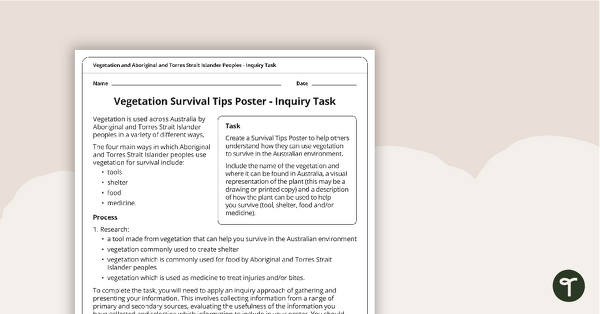
Survival Tips Inquiry Task
An inquiry-based assessment task for students to demonstrate their understanding of how vegetation is used across Australia by Aboriginal and Torres Strait Islander peoples in a variety of different ways.
- Plus Plan
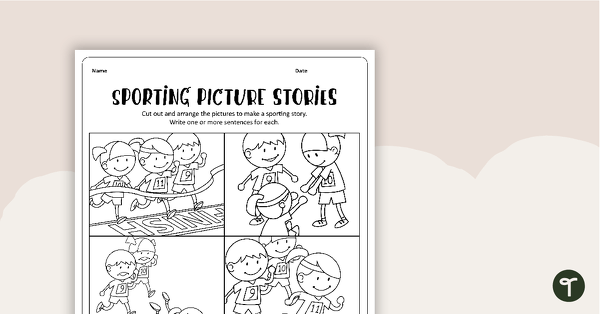
Sporting Picture Stories - Sequencing Activity
A set of sequencing cards for students to use as an independent writing activity.
- Plus Plan
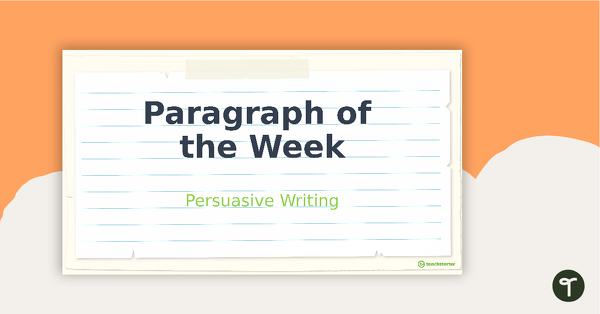
Paragraph of the Week PowerPoint - Persuasive Paragraphs
A Paragraph of the Week PowerPoint presentation to use when setting up this writing strategy in your classroom.
- Plus Plan

Paragraph of the Week PowerPoint - Informative Paragraphs
A Paragraph of the Week PowerPoint presentation to use when setting up this writing strategy in your classroom.
- Plus Plan
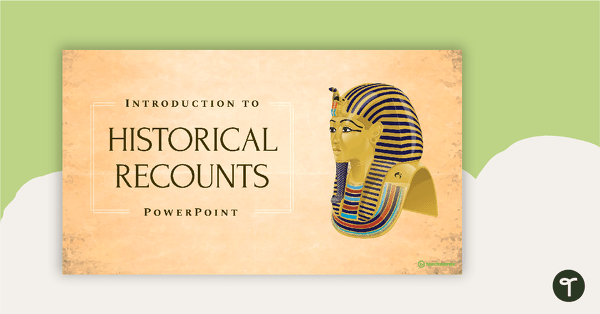
Introduction to Historical Recounts PowerPoint
A 17 slide editable PowerPoint template to use when teaching older students about the structure and language features of historical recounts.
- Plus Plan
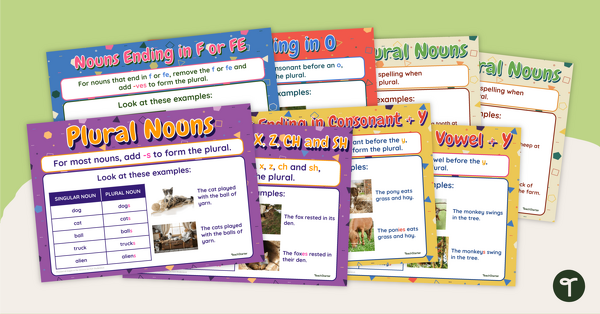
Plural Rules Poster Pack
Make plural rules a breeze to understand with plural noun posters.
- Plus Plan

Queensland Cursive Entries and Exits Spaceship - Purple
A set of 12 Queensland Cursive entry and exit shuttles to join together to make a handwriting spaceship.
- Plus Plan
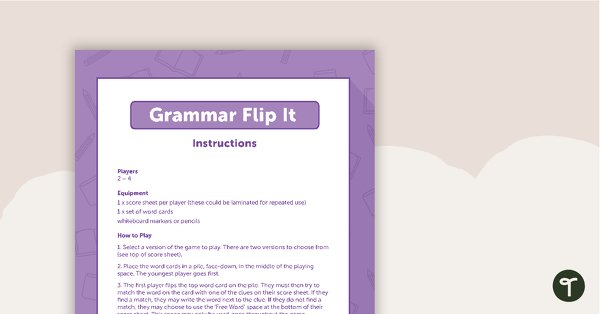
Adverb Grammar Card Game – Flip It!
A fun game for students to play in small groups to consolidate their understanding of adverbs.
- Plus Plan
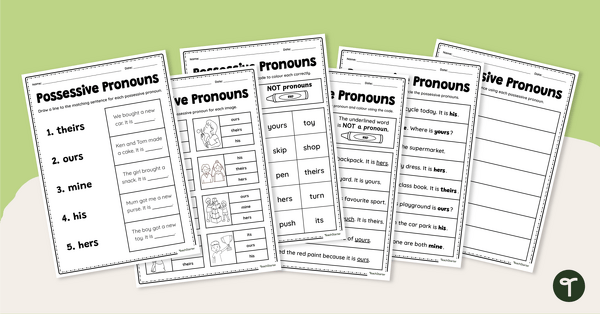
Possessive Pronouns Worksheet Pack
Use this possessive pronouns worksheet pack to get your students identifying and using these essential parts of speech.
- Plus Plan
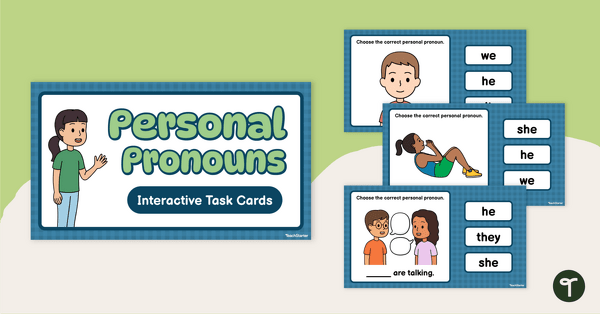
Personal Pronouns Interactive Task Cards
Use this online personal pronouns game to get your students identifying and using these important parts of speech.
- Plus Plan
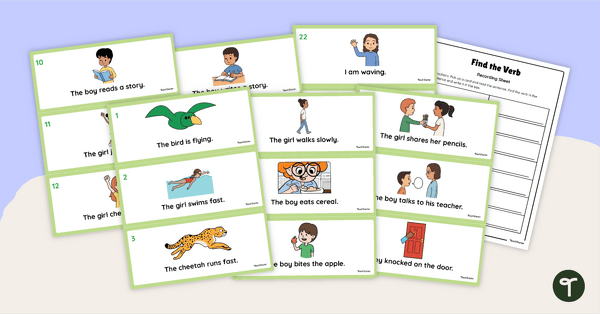
Find the Verb Task Cards
Help students recognise verbs in sentences with this set of Find the Verb task cards and recording sheet.
- Plus Plan
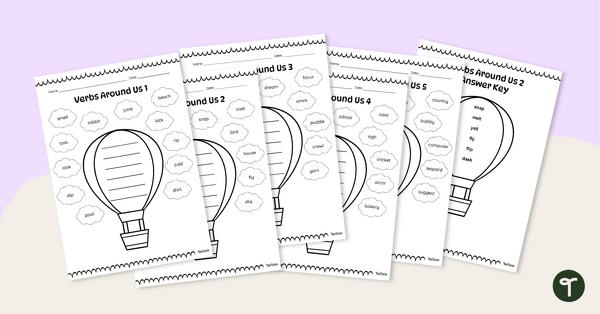
Verbs Around Us Worksheet Pack
Practise identifying verbs in a collection of words with this set of five verb worksheets.
- Plus Plan

Cut and Paste Shades of Meaning Verb Sort
Engage your students in exploring subtle differences between verbs with this set of two cut and paste worksheets.
- Plus Plan
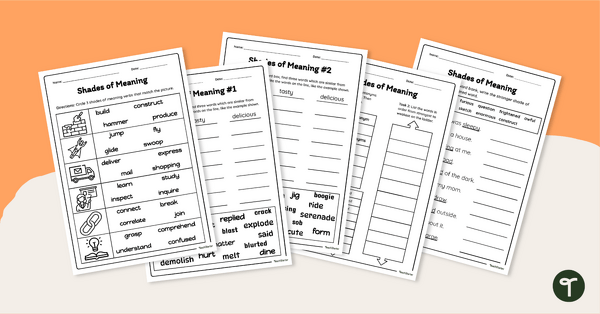
Shades of Meaning in Verbs Worksheet Pack
Help your students explore different verbs for their writing with these shades of meaning verb worksheets.
- Plus Plan
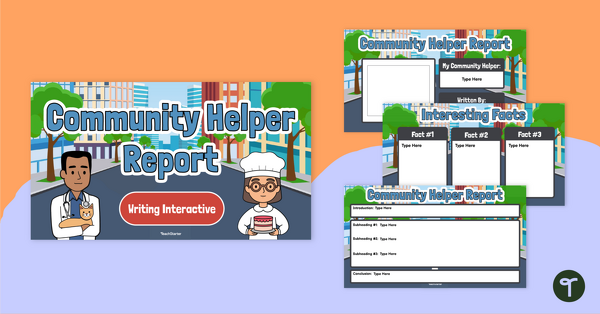
Community Helper – Digital Report Writing Activity
Use this community helpers interactive activity to model the purpose and structural elements of information reports.
- Plus Plan
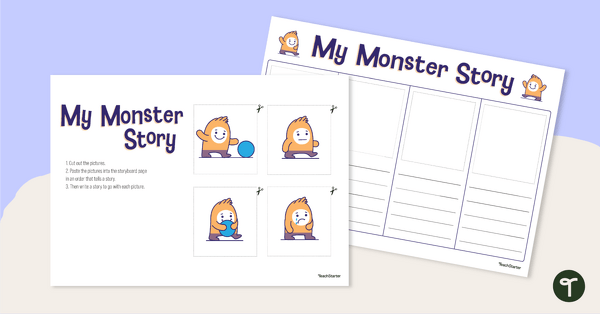
My Monster Story Template
Use this simple story template to get your students writing simple narratives based on a sequence of events.
- Plus Plan
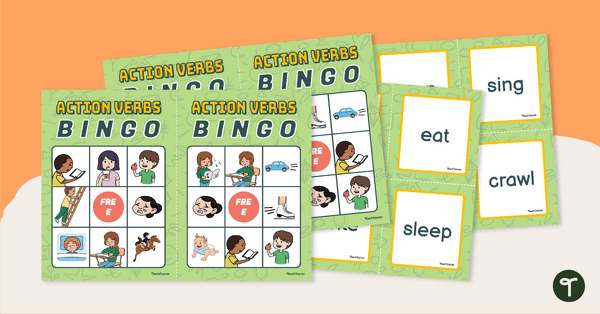
Action Verbs Bingo
Identify action verbs with this set of 20 BINGO cards.
- Plus Plan
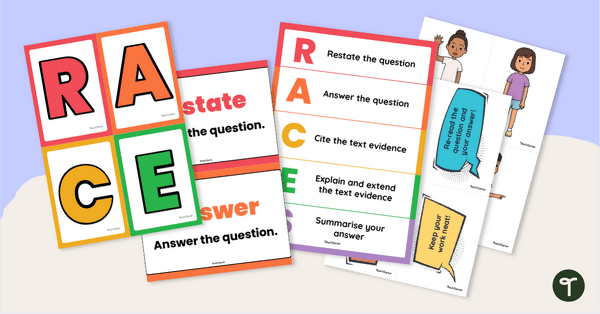
R.A.C.E.S. Constructed Response Writing Classroom Display
Help your students write evidence-based responses to text with a printable R.A.C.E.S. Writing Strategy classroom display.
- Plus Plan
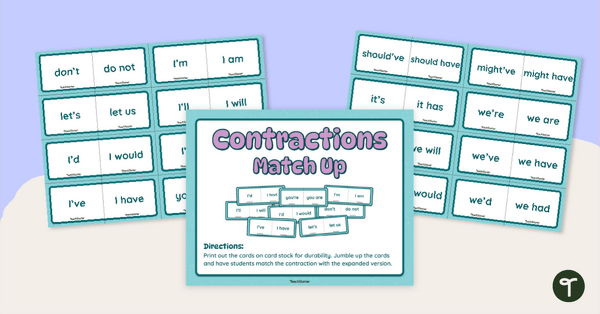
Contraction Match-Up Cards
Practise matching contractions with their expanded form with this extensive collection of match up cards.
- Plus Plan
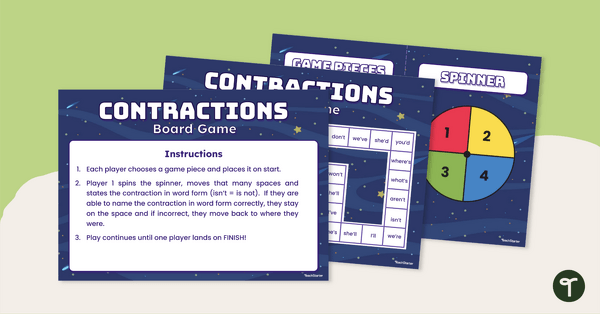
Contractions Board Game
Encourage growth in spelling and writing conventions with a board game to practise making contractions using apostrophes.
- Plus Plan
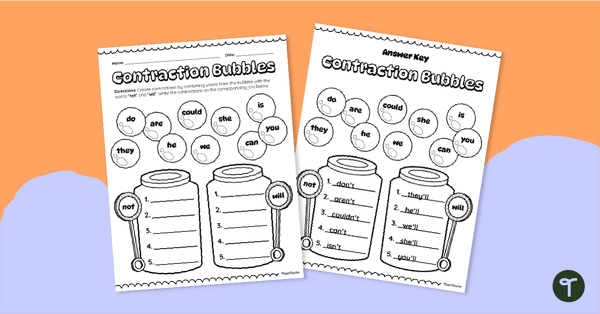
Contraction Bubbles Worksheet
Practise matching words to create contractions with this fun bubble-themed worksheet.
- Plus Plan

How to Make a Salad – Procedural Writing Craftivity
Use this engaging craft activity on making a salad to teach your students all they need to know about procedural writing!
- Plus Plan
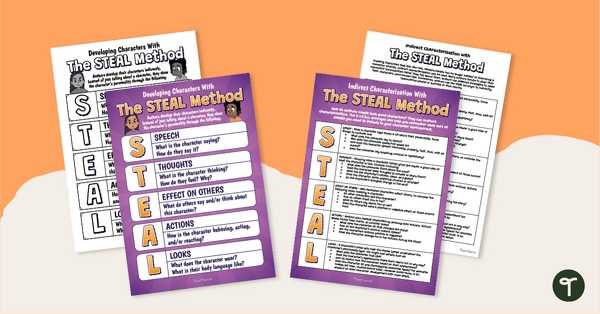
STEAL Characterisation Anchor Charts
Use the S.T.E.A.L. method of characterisation to help your students ‘steal’ the show with their writings using handy printable anchor charts.
- Plus Plan
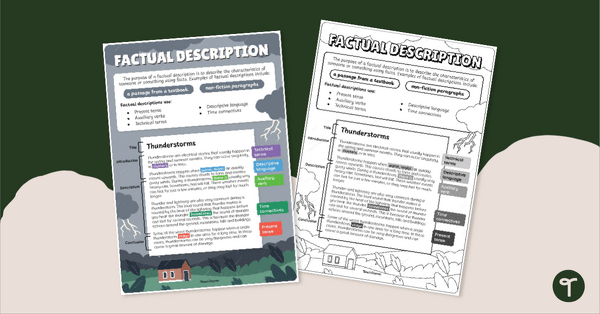
Factual Description Text Type Poster With Annotations
Display this factual description with annotations to help students identify the structure of this type of text.
- Plus Plan
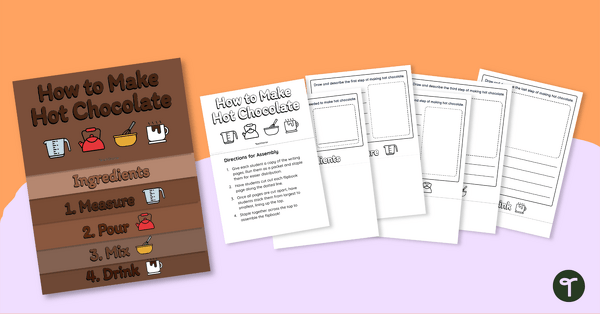
How to Make Hot Chocolate Flipbook
Use this “How to Make Hot Chocolate” procedural writing activity to help familiarise your students with the structural elements of procedure texts.
- Plus Plan
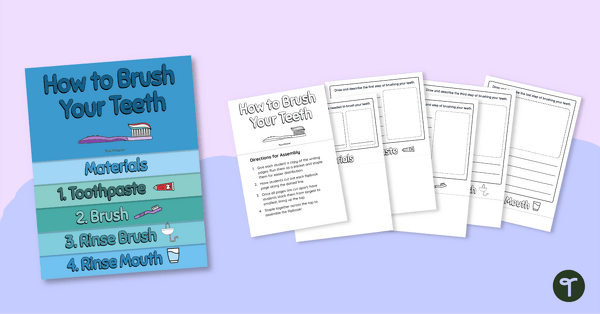
How to Brush Your Teeth Flipbook
Use this “How to Brush Your Teeth” procedural writing activity to help familiarise your students with the structural elements of procedure texts.
- Plus Plan
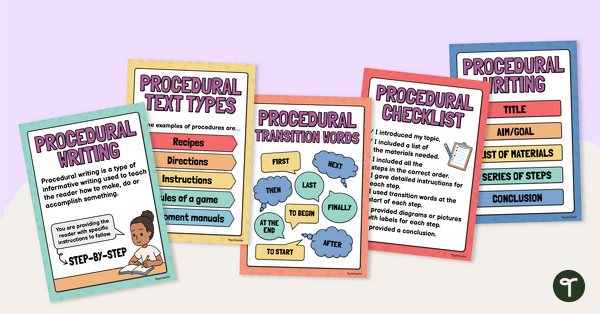
Procedural Writing Posters
Display this set of 5 procedural writing posters in your classroom during your procedural writing unit.
- Plus Plan
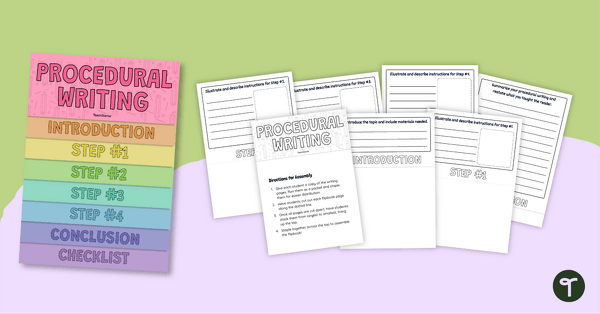
Procedural Writing Flipbook
Get your students to write a procedure text using this easy-to-compile flipbook scaffold.
- Free Plan
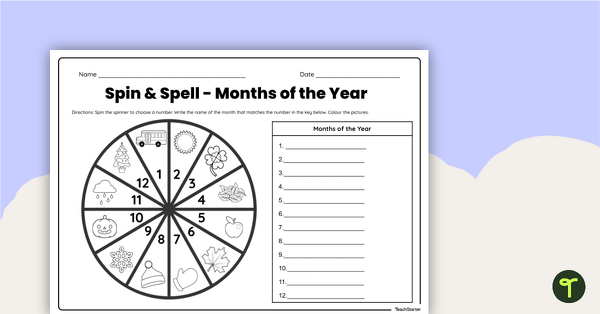
Spinand Spell Spelling - Months of the Year Worksheet
Spin and spell the months of the year with a free spelling worksheet for year 2.
- Plus Plan
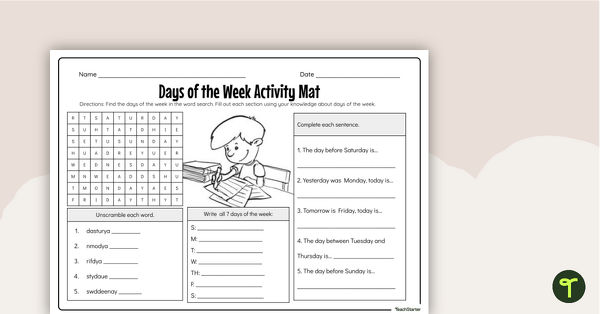
Days of the Week Activity Mat
Review the order and spelling of the days in a week with a printable Days of the Week Activity Mat!
- Plus Plan
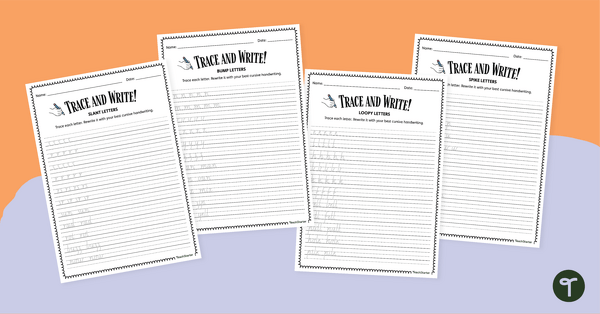
Pre-Cursive Alphabet Letters Worksheets - Mixed
Use printable pre-cursive writing worksheets PDF files to learn how to write in cursive.
- Plus Plan
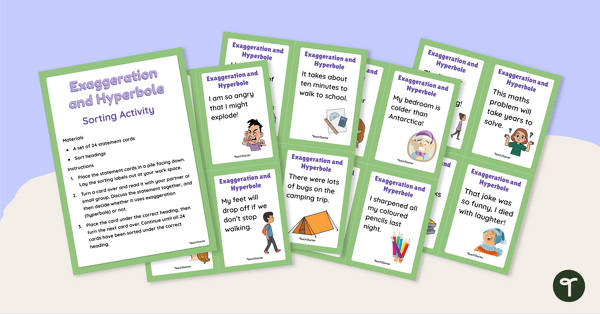
Exaggeration and Hyperbole Sorting Activity
Explore examples of hyperbole with your students using this set of 24 sorting cards perfect for your collaborative group work.
- Writing Worksheets
- Writing Templates
- Writing Games
- Writing Posters
- Writing Teaching Presentations
- Writing Labels, Signs & Decorations
- Writing Word Walls
- Writing Projects
- Writing for Preschool/Kindergarten
- Writing for Foundation Year
- Writing for Year 1
- Writing for Year 2
- Writing for Year 3
- Writing for Year 4
- Writing for Year 5
- Writing for Year 6
- Writing for Year 7